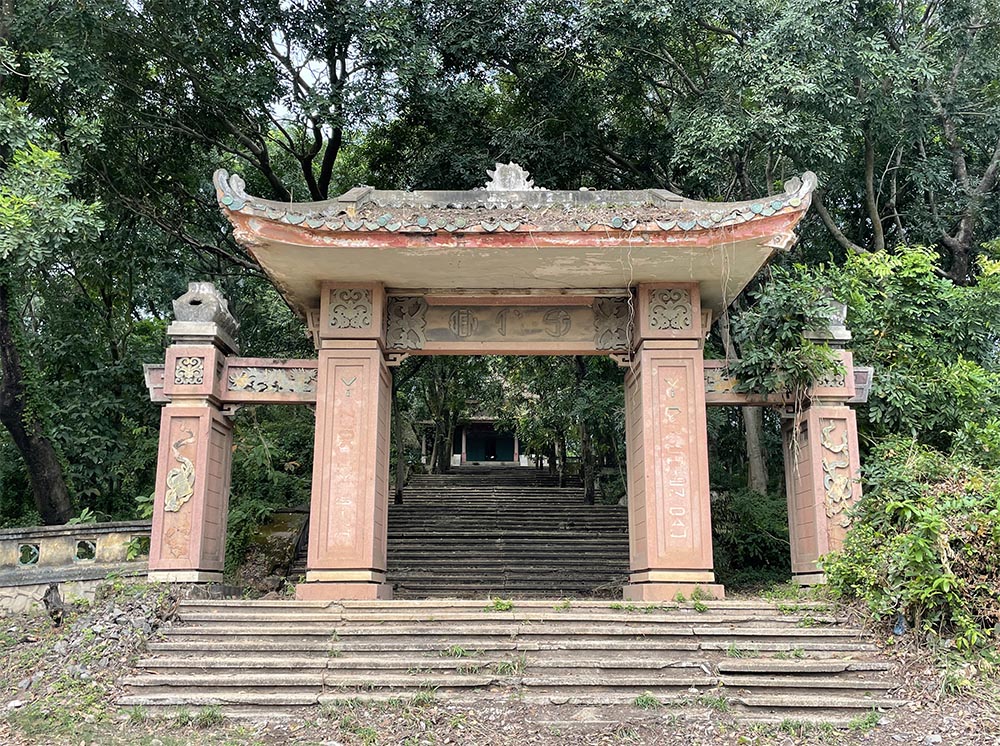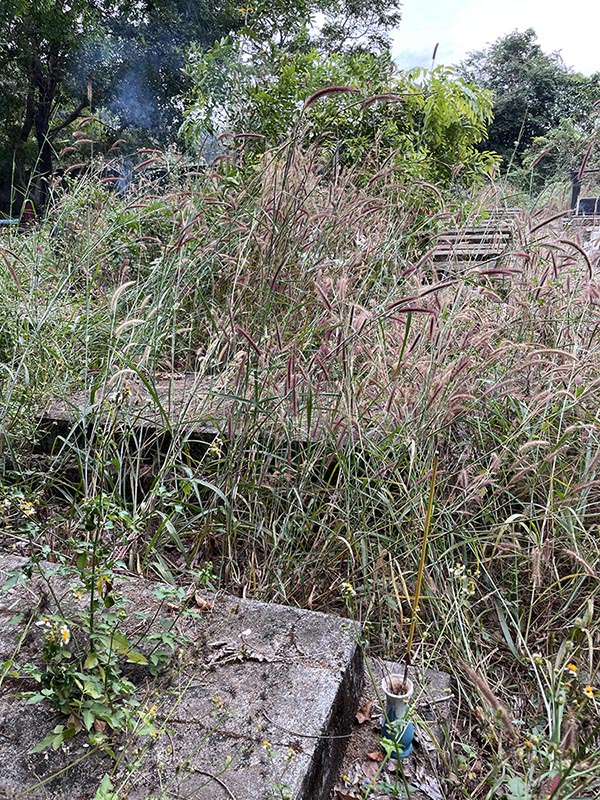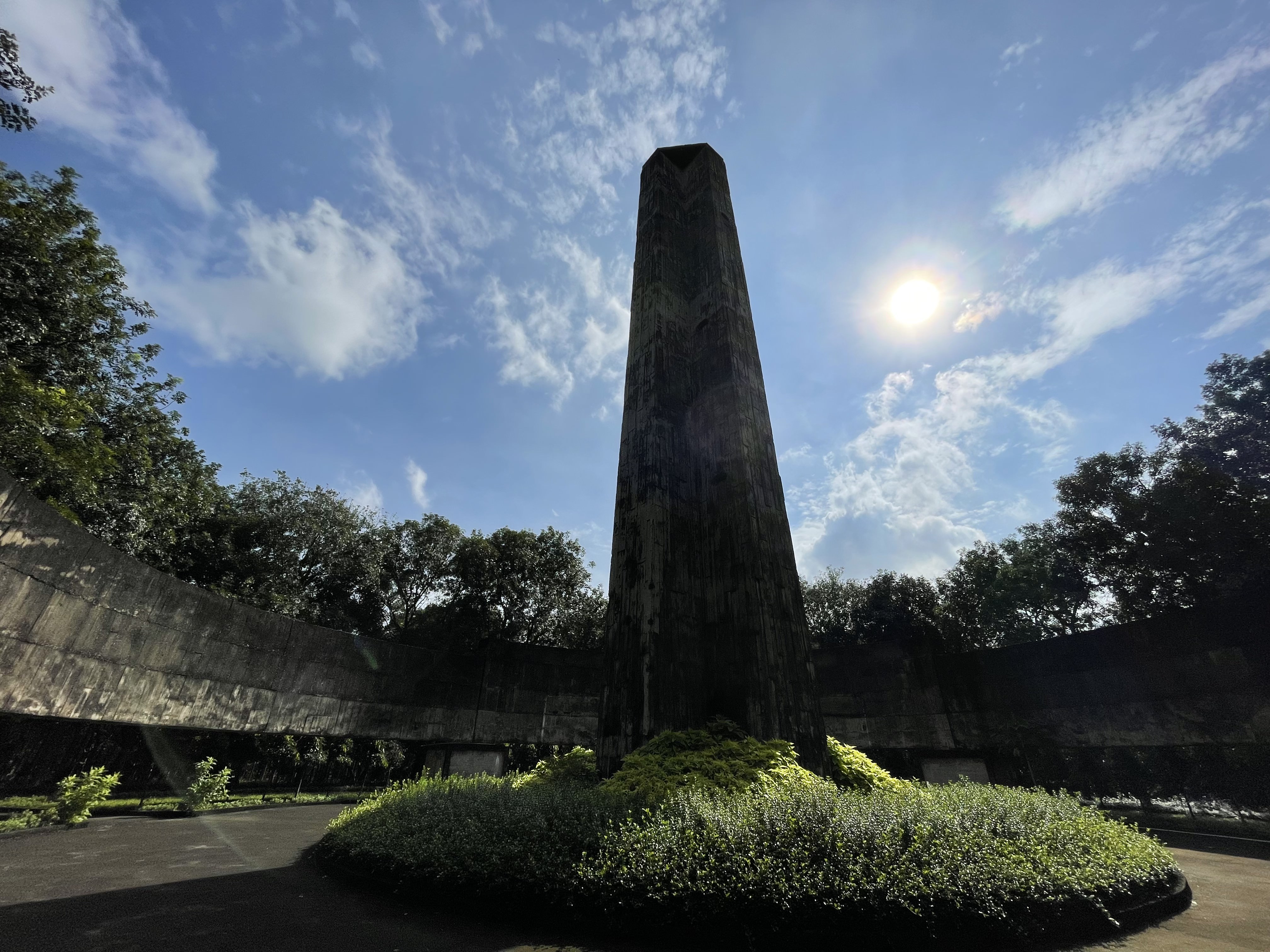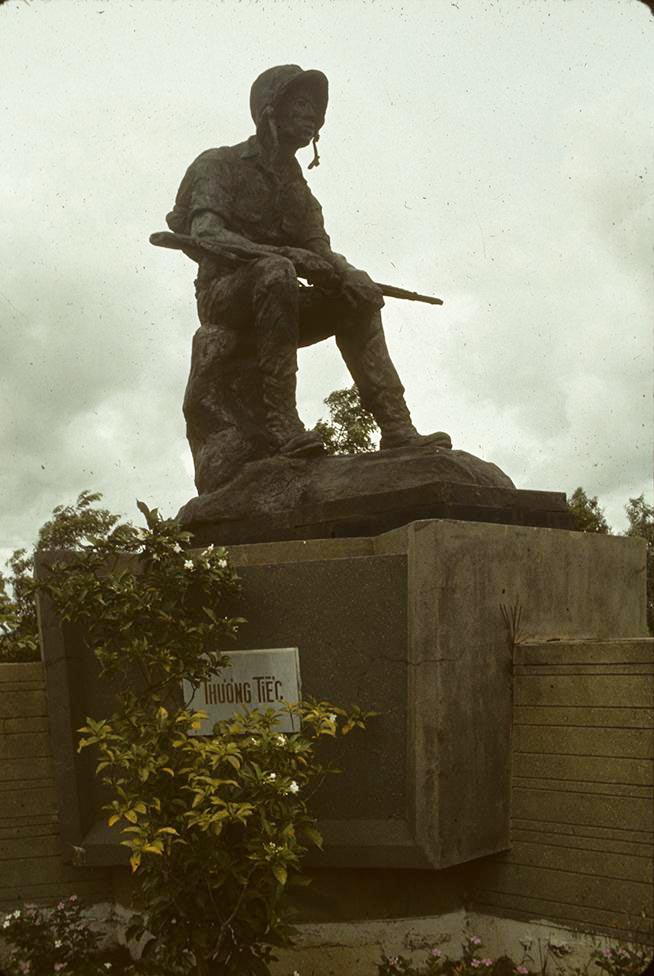A Living Material Archive of the Republic of Vietnam: The Case of the Biên Hoà Military Cemetery
“This is in the only place left. We need to preserve it!” This statement was uttered by a veteran of the military of the Republic of Vietnam during one of my field research visits to what was formerly known as the Biên Hoà Military Cemetery, now renamed Bình An People’s Cemetery. 1 The cemetery, whose construction began in the mid-1960s, is one of the most important commemorative sites of the Republic of Vietnam (or “South Vietnam”) that still stands in contemporary Vietnam. My field research in the cemetery (multiple short trips between 2021 and 2023) was part of the research for the project Bones of Contention: Technologies of Identification and Politics of Reconciliation in Vietnam, led by Dr. Tam Ngo at the NIOD Institute for War, Holocaust and Genocide Studies. 2 Funded by the National Dutch Research Organisation (NWO), the project investigates the processes of war dead identification, commemoration, and postwar reconciliation in Vietnam.
When the Second Indochina War – popularly known as the Vietnam War in many Western contexts – ended in 1975, the cemetery was the resting place of more than 16,000 South Vietnam soldiers and military officers. In the immediate postwar period, the cemetery came under the control of Military Zone Seven, Vietnam Ministry of Defence. Access to the cemetery was heavily curtailed. Families of the fallen were asked to move the remains of their loved ones (and many did), while local people discreetly placed incense for the dead around the premises of the cemetery. 3 The cemetery and its many graves became dilapidated. At the end of 2006, however, the Vietnamese government decided to transfer the cemetery’s management to the local provincial government. This decision emerged from many discussions within the Vietnamese government, as well as between various individuals in the Vietnamese government and those in the diasporas. 4 Until now, the site still figures prominently in national and transnational discussions and negotiations over postwar reconciliation. 5
The sentiment expressed by the veteran in the beginning of this article has prompted me to think of the site as an archive of the continuing legacies of South Vietnam inside Vietnam. As I have written more extensively elsewhere, 6 with the transfer of the cemetery management, more families, local volunteers, and diasporic organisations have been active in caring for the graves of the fallen. Apart from its significance in US-Vietnam bilateral relations, the material culture of and socio-cultural practices in the cemetery offer a living archive into the study of South Vietnam history and its legacies in the country. In this article, I want to lay out two considerations that might be helpful for the study of the Republic of Vietnam, particularly through the lens of material and commemorative culture.
First, there is the history of design. The Biên Hoà Military Cemetery has been referred to as the Arlington Cemetery of South Vietnam by the overseas Việt Museum in California and by Americans interested in the history of the war. 7 However, according to an online interview with the well-known South Vietnam sculptor Nguyễn Thanh Thu 8 – the creator of the famed Thương tiếc (Mourning) statue [Fig. 1] that once greeted visitors to the cemetery – it appears that the direct inspiration for the cemetery design was not the original Arlington Cemetery, but rather, the American Cemetery in Manila, the Philippines. In examining the structure of the two cemeteries [Figs. 2 and 3], one can notice some similarities. 9

Fig. 2: Screenshot of the Việt Museum website, showing the replica of the Biên Hoà Military Cemetery. (Screenshot by Dat Nguyen, June 2025)

Fig. 3: Picture of the American Cemetery in Manila. (Photo courtesy of Flickr user Storm Crypt, reprinted under a Creative Commons license: CC BY-NC-ND 2.0)
For example, at both cemeteries, graves are arranged in hemicycles, and at the centre is a circular structure from where one can have an overview of the different grave sections. In the case of the Biên Hoà Military Cemetery, at the centre of the central circular structure, there stands a tall sword-like structure. This sword-like structure is called Nghĩa Dũng Đài (The Tower of Bravery), while the circular structure wrapping around the tower is likened to the funeral band (Vành Khăn Tang) that one wears around one’s head during funerals in Vietnam. In tracing the design history of the Biên Hoà cemetery, one can see that there was a circulation of aesthetic ideas and design, at least when it comes to war commemorative culture, across countries and territories that experienced US military intervention. Simultaneously, it highlights how these aesthetic flows were also localised. Beyond the addition of the Tower of Bravery and the symbolism of the funeral band, the Biên Hoà cemetery also has a Temple of the Fallen (Đền Tử Sĩ) close to its entrance. To enter the temple, one has to pass the three-gated entrance (Cổng Tam Quan), a traditional structure signifying one’s crossing over into a sacred space [Fig. 4]. In examining these similarities and differences in architectural design, one can trace the various transnational influences, but also their localisation, that informed the formation of the material and commemorative culture of the Republic of Vietnam.

Fig. 4: The three-gated structure leading to the Temple of the Fallen. (Photo by Dat Nguyen, 2021)
The second consideration that I want to propose here is to think of the cemetery not only in terms of what it was previously, but also in terms of what it is now, namely a potential living archive of the legacies of the Republic of Vietnam in contemporary Vietnam itself. My field research trips to the cemetery have attuned me to the layered material culture of the place. The cemetery has undergone many changes since the end of the war. Many blog posts, newspaper articles, and other reporting written by members of the diasporic Vietnamese community have lamented the decrepit state of the cemetery compared to what it used to be, with overgrown trees, weeds, and the deterioration of many graves [Fig. 5]. At the same time, families, volunteer groups, and diasporic Vietnam veteran organisations have undertaken efforts to restore the cemetery and commemorate the fallen. If one approaches the cemetery as a living archive, one can see how its material culture and the natural environment contain narratives and physical traces of violence, but also of restoration and regeneration.

Fig. 5: Natural elements in the cemetery. (Photo by Dat Nguyen, 2023)

Figure 7: Central structure of the Biên Hoà Military Cemetery. (Photo by Dat Nguyen, 2021)
Take, for example, the graves themselves. Since the mid-2000s, diasporic Vietnamese organisations like Association d’Aide aux victimes de guerre du Vietnam (or “Wooden Crutch Association, Hội Nạng Gỗ) in France and the Vietnamese American Foundation (VAF) in the United States have helped restore many of the graves, including replacing old grave mounds with cement structures. 10 During my fieldwork, local volunteers at the cemetery were able to point out to me which grave structures were new and which were from the previous eras. These new cement graves, over the years, have also suffered from deterioration from climatic and natural conditions. Most recently, an informal local volunteer network has also added a layer of white ceramic on these graves to ensure that they are less exposed to the elements [Fig. 6].
Not to mention, many graves were also built anew by families, with their distinctive styles. As such, the layered materials, as well as the building and rebuilding of graves, all say something about the history of the site. Paying attention to these layers of material culture allows us to trace what one can tentatively call “the archaeology of the Republic of Vietnam” and its continuing living legacies.
Taking these considerations into account, I want to propose seeing the Biên Hoà Military Cemetery – including its design, its material culture, and its environment – as a living archive of the Republic of Vietnam and its legacies. While it remains a place of contention and of pain for many, it is in many ways also a site where new initiatives of restoration and regeneration can be found. It is also a place where transnational historical war connections can be considered anew.
Dat Nguyen is a researcher at the NIOD Institute for War, Holocaust and Genocide Studies, specialising in the study of religion, care, and war legacies in Vietnam. He is currently coordinating and co-developing NIOD’s research programme on violence and the environment, where he focuses on Agent Orange issues in Vietnam. Email: d.nguyen@niod.knaw.nl
